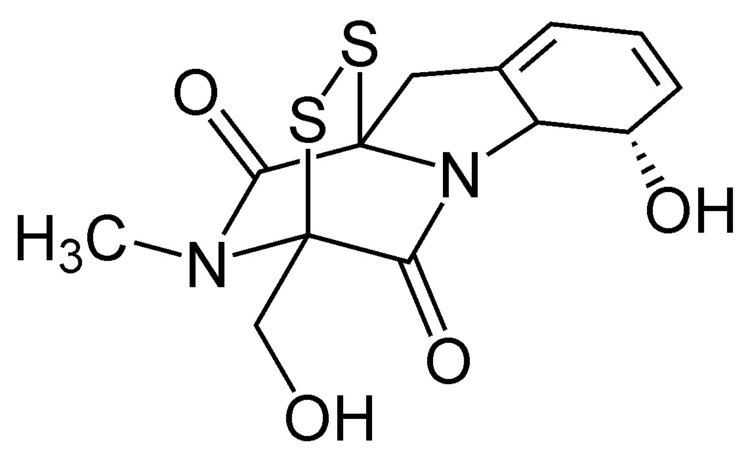Molar mass 326.4 g/mol | ||
 | ||
Appearance white to light yellow solid | ||
Gliotoxin is a sulfur-containing mycotoxin that belongs to a class of naturally occurring 2,5-diketopiperazines produced by several species of fungi, especially those of marine origin. It is the most prominent member of the epipolythiopiperazines, a large class of natural products featuring a diketopiperazine with di- or polysulfide linkage. These highly bioactive compounds have been the subject of numerous studies aimed at new therapeutics. Gliotoxin was originally isolated from Gliocladium fimbriatum, and was named accordingly. It is an epipolythiodioxopiperazine metabolite.
Contents
Occurrence
The compound is produced by human pathogens such as Aspergillus fumigatus, and also by species of Trichoderma, and Penicillium. Gliotoxin has also been reported from yeasts of the genus Candida, but results from other studies have cast doubt on the production of this metabolite by Candida fungi.
Mechanism of action
Gliotoxin possesses immunosuppressive properties as it may suppress and cause apoptosis in certain types of cells of the immune system, including neutrophils, eosinophils, granulocytes, macrophages, and thymocytes. It also acts as an inhibitor of farnesyl transferase. It noncompetitively inhibits the chymotrypsin-like activity of the 20S proteasome. In vivo it displays anti-inflammatory activity. It acts by blocking thiol groups in the cell membranes. It was investigated as an antibiotic and antifungal in the 1940s and as an antiviral agent.
